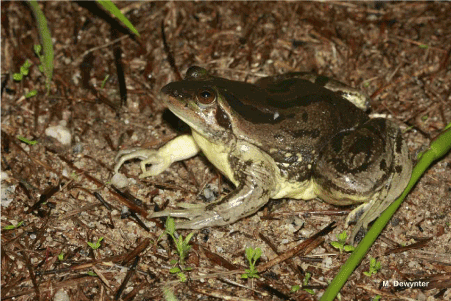


CAERULEIN PRECURSOR FRAGMENT 3 SKIN
In addition, CPF-SE1 (GFLGPLLKLGLKGVAKVIPHLIPSRQQ), previously isolated from skin secretions of the tetraploid frog Silurana epitropicalis, produced a significant (P <0.05) increase in the rate of insulin release at 0.03 nM with a 514 ± 13% increase over basal rate at 3 μM. CPF-7 (GFGSFLGKALKAALKIGANALGGAPQQ) produced the maximum stimulation of insulin release (571 ± 30 % of basal rate at 3 μM). CPF-1, CPF-3, CPF-5 and CPF-6 were the most potent producing a significant (P <0.05) increase in the rate of insulin release at concentration of 0.03 nM. These peptides were purified to near homogeneity and structural characterization showed that they belong to the magainin (2 peptides), peptide glycine-leucine-amide (PGLa) (1 peptide), xenopsin precursor fragment (1 peptide), and caerulein precursor fragment (CPF) (6 peptides) families. N2 - Peptidomic analysis of norepinephrine-stimulated skin secretions of the tetraploid clawed frog Xenopus laevis (Pipidae) led to the identification of 10 peptides with the ability to stimulate the release of insulin from the rat BRIN-BD11 clonal β cell line. T1 - Caerulein precursor fragment (CPF) peptides from the skin secretions of Xenopus laevis and Silurana epitropicalis are potent insulin-releasing agents. The CPF peptides show potential for development into agents for the treatment of Type 2 diabetes.", The mechanism of action of the CPF peptides involves, at least in part, membrane depolarization and an increase in intracellular Ca(2+) concentration. No CPF peptide stimulated release of the cytosolic enzyme, lactate dehydrogenase from BRIN-BD11 cells at concentrations up to 3 μM indicating that the integrity of the plasma membrane had been preserved. The CPF peptides show potential for development into agents for the treatment of Type 2 diabetes.Ībstract = "Peptidomic analysis of norepinephrine-stimulated skin secretions of the tetraploid clawed frog Xenopus laevis (Pipidae) led to the identification of 10 peptides with the ability to stimulate the release of insulin from the rat BRIN-BD11 clonal β cell line. Peptidomic analysis of norepinephrine-stimulated skin secretions of the tetraploid clawed frog Xenopus laevis (Pipidae) led to the identification of 10 peptides with the ability to stimulate the release of insulin from the rat BRIN-BD11 clonal β cell line.


 0 kommentar(er)
0 kommentar(er)
